Insights into the Mobility Pattern of Australians during COVID-19
Abstract
:1. Introduction
2. Materials and Methods
3. Impact on Transportation
- A greater number of individuals share a common space for a prolonged duration, with limited means of ventilation.
- Users of public transport comprising the elderly and people with movement disabilities are at a higher risk of catching the virus.
- Several exposed surfaces (i.e., the railings, doors, tickets, farebox and straps) that have been touched by many people may lead to the vigorous spread of the virus.
- There is a lack of control or method of pre-screening people before boarding public transport.
3.1. Economic Impact on the Transport Industry
3.2. Travel Restrictions
3.3. Public Transport
3.4. Change in the Mode of Transport
3.5. Travelling during COVD-19
4. Economic and Social Impact
5. Flexible Working Arrangements
6. Shopping Patterns of People
7. Discussion
8. Conclusions
- The public transport usage dropped to 46%, visits to public places dropped to 23% and only 15% of employees worked from their offices.
- The preference of working conditions in different states of Australia was evaluated, and it was found that more than 40% of the employees are willing to go back to their office working environment, while 15% are willing to continue working from home.
- Australia has observed the highest record of online shopping ever, increasing to 41% in April 2020, which was 17% the same time in 2019.
Author Contributions
Funding
Institutional Review Board Statement
Informed Consent Statement
Data Availability Statement
Conflicts of Interest
References
- ABC. Coronavirus Pandemic Means Some Australian Workers Are Busier Than Ever. 2020. Available online: https://www.abc.net.au/news/2020-04-12/coronavirus-work-for-truck-driverssupermarket-workers-cleaners/12142448 (accessed on 10 January 2021).
- ABC. Coronavirus Disease (COVID-19) Advice for the Public: Myth Busters from WHO. 2020. Available online: https://www.who.int/emergencies/diseases/novel-coronavirus-2019/advice-for-public/myth-busters (accessed on 20 April 2021).
- ABC. Academics in Talks to Take Pay Cuts to Save Thousands of University Jobs during Coronavirus Pandemic. 2020. Available online: https://www.abc.net.au/news/2020-05-13/universitiesand-union-negotiate-pay-cuts-save-jobs-coronavirus/12239448 (accessed on 12 February 2021).
- Abu-Rayash, A.; Dincer, I. Analysis of mobility trends during the COVID-19 coronavirus pandemic: Exploring the impacts on global aviation and travel in selected cities. Energy Res. Soc. Sci. 2020, 68, 101693. [Google Scholar] [CrossRef] [PubMed]
- Agarwal, P.; Mulenga, C. Impact of COVID-19 on International Trade: Lessons for African LDCs. SSRN 3693901. 2020. Available online: https://www.theguardian.com/australianews/2019/oct/08/morrison-government-defends-newstart-amid-criticism-it-isamong-lowest-welfare-payments-in-oecd (accessed on 10 March 2021).
- Anzai, A.; Kobayashi, T.; Linton, N.M.; Kinoshita, R.; Hayashi, K.; Suzuki, A.; Nishiura, H. Assessing the impact of reduced travel on exportation dynamics of novel coronavirus infection (COVID-19). J. Clin. Med. 2020, 9, 601. [Google Scholar] [CrossRef] [Green Version]
- Australian Bureau of Statistics. Census QuickStats. 2016. Available online: https://quickstats.censusdata.abs.gov.au/census_services/getproduct/census/2016/quickstat/036 (accessed on 20 March 2021).
- Australian Bureau of Statistics. Media Release. 2017. Available online: https://www.abs.gov.au/ausstats/abs@.nsf/lookup/3412.0Media%20Release12015-16 (accessed on 18 March 2021).
- Australian Bureau of Statistics. Australian Demographic Statistics. 2019. Available online: https://www.abs.gov.au/ausstats/ (accessed on 1 April 2021).
- Australian Government. Coronavirus (COVID-19) Current Situation and Case Numbers. 2020. Available online: https://www.health.gov.au/news/health-alerts/novel-coronavirus-2019-ncov-health-alert/coronavirus-covid-19-current-situation-and-case-numbers (accessed on 20 May 2021).
- Apple. COVID-19 Mobility Trends Reports. 2020. Available online: https://www.apple.com/covid19/mobility (accessed on 16 March 2021).
- Adekunle, A.; Meehan, M.; Rojas-Alvarez, D.; Trauer, J.; McBryde, E. Delaying the COVID-19 epidemic in Australia: Evaluating the effectiveness of international travel bans. Aust. N. Z. J. Public Health 2020, 44, 257–259. [Google Scholar] [CrossRef] [PubMed]
- Aktay, A.; Bavadekar, S.; Cossoul, G.; Davis, J.; Desfontaines, D.; Fabrikant, A.; Gabrilovich, E.; Gadepalli, K.; Gipson, B.; Guevara, M.; et al. Google COVID-19 community mobility reports anonymization process description (version 1.0). arXiv 2020, arXiv:2004.04145. [Google Scholar]
- Baldwin, R.E.; Tomiura, E. Thinking Ahead about the Trade Impact of COVID-19. In Economics in the Time of COVID-19; Centre for Economic Policy Research: London, UK, 2020; p. 59. [Google Scholar]
- Beck, M.J.; Hensher, D.A. Insights into the impact of COVID-19 on household travel and activities in Australia—The early days of easing restrictions. Transp. Policy 2020, 99, 95–119. [Google Scholar] [CrossRef] [PubMed]
- Beck, M.J.; Hensher, D.A.; Wei, E. Slowly coming out of COVID-19 restrictions in Australia: Implications for working from home and commuting trips by car and public transport. J. Transp. Geogr. 2020, 88, 102846. [Google Scholar] [CrossRef]
- Biddle, N.; Edwards, B.; Gray, M.; Sollis, K. Hardship, Distress, and Resilience: The Initial Impacts of COVID-19 in Australia; Australian National University Centre for Social Research and Methods: Acton, Australia, 2020. [Google Scholar]
- Blackmore, J. The carelessness of entrepreneurial universities in a world risk society: A feminist reflection on the impact of Covid-19 in Australia. High. Educ. Res. Dev. 2020, 39, 1332–1336. [Google Scholar] [CrossRef]
- Citymapper Mobility Index. 2020. Available online: www.citymapper.com/CMI (accessed on 2 May 2021).
- Currie, G.; Jain, T.; Aston, L.; McCarthy, L. Long-term post-pandemic impacts of the COVID-19 crisis on travel–early results. In Proceedings of the Smart Public Transport Lab Webinar, Delft, The Netherlands, 3 June 2020; The Delft University of Technology: Delft, The Netherlands, 2020. [Google Scholar]
- Chang, S.; Harding, N.; Zachreson, C.; Cliff, O.M.; Prokopenko, M. Modelling transmission and control of the COVID-19 pandemic in Australia. Nat. Commun. 2020, 11, 5710. [Google Scholar] [CrossRef]
- O’Sullivan, D.; Rahamathulla, M.; Pawar, M. The impact and implications of COVID-19: An Australian perspective. Int. J. Community Soc. Dev. 2020, 2, 134–151. [Google Scholar] [CrossRef]
- Dwivedi, Y.K.; Hughes, D.L.; Coombs, C.; Constantinou, I.; Duan, Y.; Edwards, J.S.; Raman, R. Impact of COVID-19 pandemic on information management research and practice: Transforming education, work and life. Int. J. Inf. Manag. 2020, 55, 102211. [Google Scholar] [CrossRef]
- Ewoldsen, B. The National Academies of Sciences Engineering Medicine. COVID-19 Trends Impacting the Future of Transportation Planning and Research. 2020. Available online: nationalacademics.org (accessed on 30 June 2021).
- Frydenberg, J. Ministerial Statement on the Economy. 2020. Available online: https://ministers.treasury.gov.au/ministers/josh-frydenberg-2018/speeches/ministerial-statement-economyparliament-house-canberragov.au/speeches/2020/sp-gov-2020-04-21.html (accessed on 28 June 2021).
- International Workplace Group. 2019. "Global Workplace Survey: Welcome to Generation Flex." In Google Community Mobility Report. 2020. Available online: https://www.google.com/covid19/mobility/ (accessed on 15 March 2021).
- Henriques-Gomes, L. Morrison Government Defends Newstart amid Criticism It Is among Lowest Welfare Payments in OECD; The Guardian Australia: Sydney, Australia, 2019. [Google Scholar]
- Hensher, D.A. What Might Covid-19 Mean for Mobility as a Service (MaaS)? 2020. Available online: https://www.sydney.edu.au/business/news-and-events/news/2020/05/25/what-might-covid-19-mean-for-mobility-as-a-service--maas--.html (accessed on 28 June 2021).
- Ibn-Mohammed, T.; Mustapha, K.B.; Godsell, J.; Adamu, Z.; Babatunde, K.A.; Akintade, D.D.; Acquaye, A.; Fujii, H.; Ndiaye, M.M.; Yamoah, F.A. A critical review of the impacts of COVID-19 on the global economy and ecosystems and opportunities for circular economy strategies. Resour. Conserv. Recycl. 2021, 164, 105169. [Google Scholar] [CrossRef]
- Johns Hopkins University & Medicine. Coronavirus Resource Center. COVID-19 Dashboard by the Center for Systems Science and Engineering (CSSE) at Johns Hopkins University (JHU). 2020. Available online: https://coronavirus.jhu.edu/map.html (accessed on 25 July 2021).
- Lyu, W.; Wehby, G.L. Community use of face masks and COVID-19: Evidence from a natural experiment of state mandates in the US: The study examines the impact on COVID-19 growth rates associated with state government mandates requiring face mask use in public. Health Affairs 2020, 39, 1419–1425. [Google Scholar] [CrossRef] [PubMed]
- Marsden, J.; Darke, S.; Hall, W.; Hickman, M.; Holmes, J.; Humphreys, K.; West, R. Mitigating and learning from the impact of COVID-19 infection on addictive disorders. Addiction 2020, 21. ISSN 0965-2140. [Google Scholar] [CrossRef] [PubMed] [Green Version]
- McKibbin, W.; Fernando, R. The economic impact of COVID-19. In Economics in the Time of COVID-19; Centre for Economic Policy Research: London, UK, 2020; p. 45. [Google Scholar]
- Mirage. Online Shopping Booms as Melbourne Bunkers Down Again. Miragenews. 2020. Available online: https://www.miragenews.com/online-shopping-booms-as-melbourne-bunkers-down-again/ (accessed on 27 July 2021).
- Mofijur, M.; Fattah, I.R.; Alam, M.A.; Islam, A.S.; Ong, H.C.; Rahman, S.A.; Mahlia, T.M.I. Impact of COVID-19 on the social, economic, environmental and energy domains: Lessons learnt from a global pandemic. Sustain. Prod. Consum. 2020, 26, 343–359. [Google Scholar] [CrossRef]
- Munawar, H.S.; Khan, S.I.; Qadir, Z.; Kouzani, A.Z.; Mahmud, M.A. Insight into the Impact of COVID-19 on Australian Transportation Sector: An Economic and Community-Based Perspective. Sustainability 2021, 13, 1276. [Google Scholar] [CrossRef]
- Prime Minister of Australia. Media Release. 2020. Available online: https://www.pm.gov.au/media/130-billion-jobkeeperpayment-keep-australians-job (accessed on 10 April 2021).
- Prime Minister of Australia. Media Release. 2020. Available online: https://www.pm.gov.au/media/advice-coronavirus (accessed on 27 April 2021).
- Prime Minister of Australia. Press Conference Transcript. 2020. Available online: https://www.pm.gov.au/media/pressconference-australian-parliament-house-08may20 (accessed on 23 February 2021).
- Hakeem, F.F.; Alshahrani, S.M.; Ghobain, M.A.; Albabtain, I.; Aldibasi, O.; Alghnam, S. The Impact of COVID-19 Lockdown on Injuries in Saudi Arabia: Results from a Level-I Trauma Center. Front. Public Health 2021, 9, 704294. [Google Scholar] [CrossRef]
- Probert, A.C.; Sivakumar, B.S.; An, V.; Nicholls, S.L.; Shatrov, J.G.; Symes, M.J.; Ellis, A.M. Impact of COVID-19-related social restrictions on orthopaedic trauma in a level 1 trauma centre in Sydney: The first wave. ANZ J. Surgery 2021, 91, 68–72. [Google Scholar] [CrossRef] [PubMed]
- Reserve Bank of Australia. An Economic and Financial Update. 2020. Available online: https://www.rba (accessed on 18 March 2021).
- Reserve Bank of Australia. Media Release. Available online: https://www.rba.gov.au/media-releases/2020/mr-20-08.html (accessed on 11 March 2021).
- Ritchie, M.; Roser, H. Our World in Data. Oxford Martin School, University of Oxford. 2020. Available online: https://ourworldindata.org/coronavirus-data (accessed on 20 May 2021).
- Romano, F. An Estimate of the Economic Impact of COVID-19 on Australia. SSRN 3581382. 2020. Available online: https://papers.ssrn.com/sol3/papers.cfm?abstract_id=3581382 (accessed on 2 June 2021).
- Scott, N.; Palmer, A.; Delport, D.; Abeysuriya, R.; Stuart, R.M.; Kerr, C.C.; Hellard, M.E. Modelling the impact of relaxing COVID-19 control measures during a period of low viral transmission. Med J. Australia 2021, 214, 79–83. [Google Scholar] [CrossRef]
- Seymour, B. Australia Post Sees Surge in Online Orders as the Country Bunkers Down during Coronavirus Lockdown. Available online: https://7news.com.au/lifestyle/health-wellbeing/australia-post-sees-surge-in-online-orders-as-the-country-bunkers-down-during-coronavirus-lockdown-c-955462 (accessed on 3 April 2020).
- Singh, A.K.; Misra, A. Impact of COVID-19 and comorbidities on health and economics: Focus on developing countries and India. Diabetes Metab. Syndr. Clin. Res. Rev. 2020, 14, 1625–1630. [Google Scholar] [CrossRef] [PubMed]
- Molloy, J. Undertaking Mobility Field Experiments Using GPS Tracking. Ph.D. Thesis, ETH Zurich, Zurich, Switzerland, 2021. [Google Scholar]
- Universities Australia. Uni Viability is Crucial to National Recovery. 2020. Available online: https://www.universitiesaustralia.edu.au/media-item/uni-viability-crucial-to-national-recovery/ (accessed on 10 December 2020).
- Weisbrod, G.; Mulley, C.; Hensher, D. Recognising the complementary contributions of cost-benefit analysis and economic impact analysis to an understanding of the worth of public transport investment: A case study of bus rapid transit in Sydney, Australia. Res. Transp. Econ. 2016, 59, 450–461. [Google Scholar] [CrossRef]
- WHO. Advice on the Use of Masks in the Context of COVID-19: Interim Guidance, 5 June 2020; World Health Organization: Geneva, Switzerland, 2020. [Google Scholar]
- Workie, E.; Mackolil, J.; Nyika, J.; Ramadas, S. Deciphering the impact of COVID-19 pandemic on food security, agriculture, and livelihoods: A review of the evidence from developing countries. Curr. Res. Environ. Sustain. 2020, 2, 100014. [Google Scholar] [CrossRef]
- Munawar, H.S.; Awan, A.A.; Khalid, U.; Munawar, S.; Maqsood, A. Revolutionizing telemedicine by instilling, H.265. Int. J. Image Graph. Signal Process. 2017, 9, 20–27. [Google Scholar] [CrossRef] [Green Version]
- Munawar, H.S. Reconfigurable origami antennas: A review of the existing technology and its future prospects. Int. J. Wirel. Microw. Technol. 2020, 10, 34–38. [Google Scholar] [CrossRef]
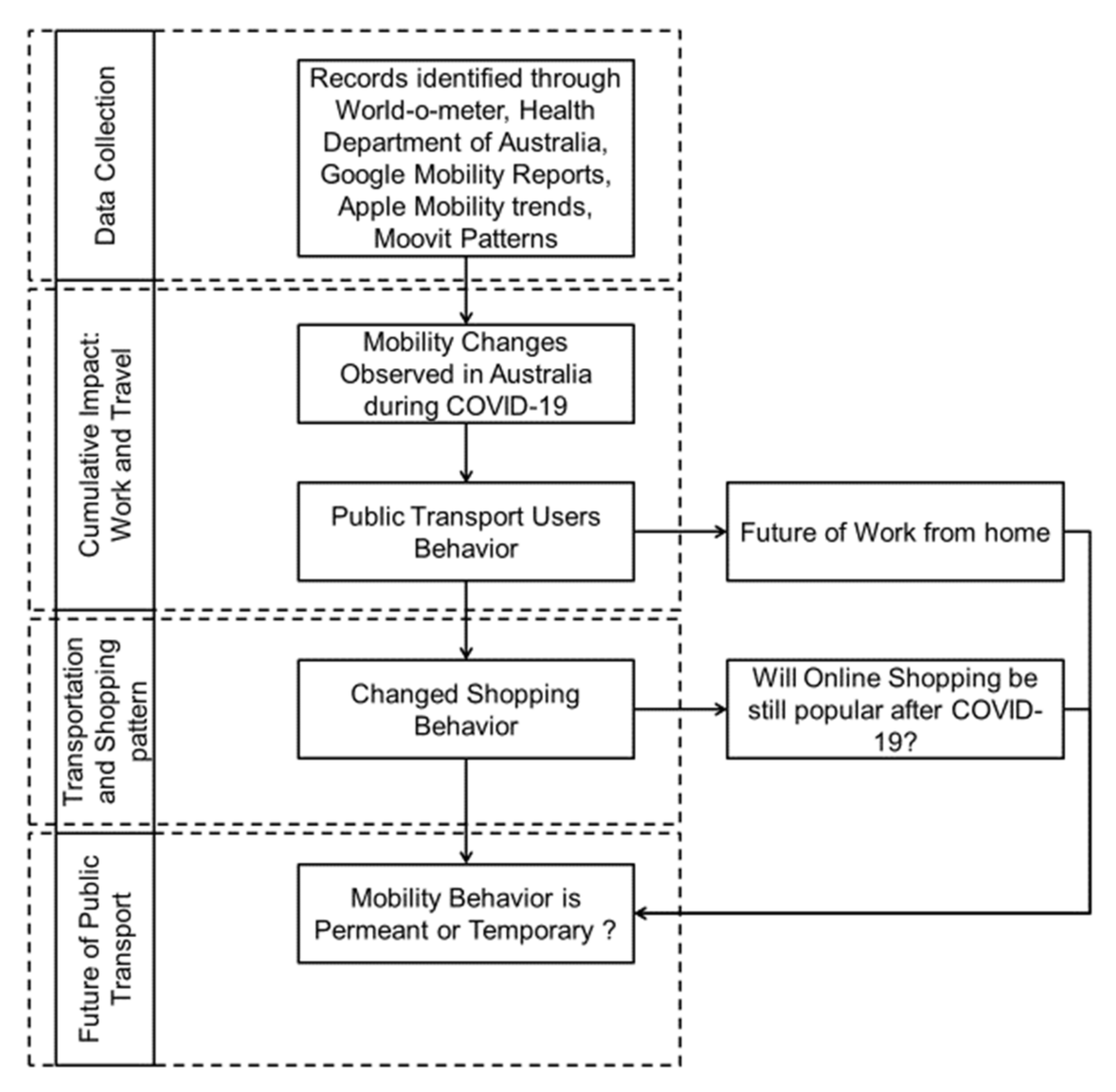
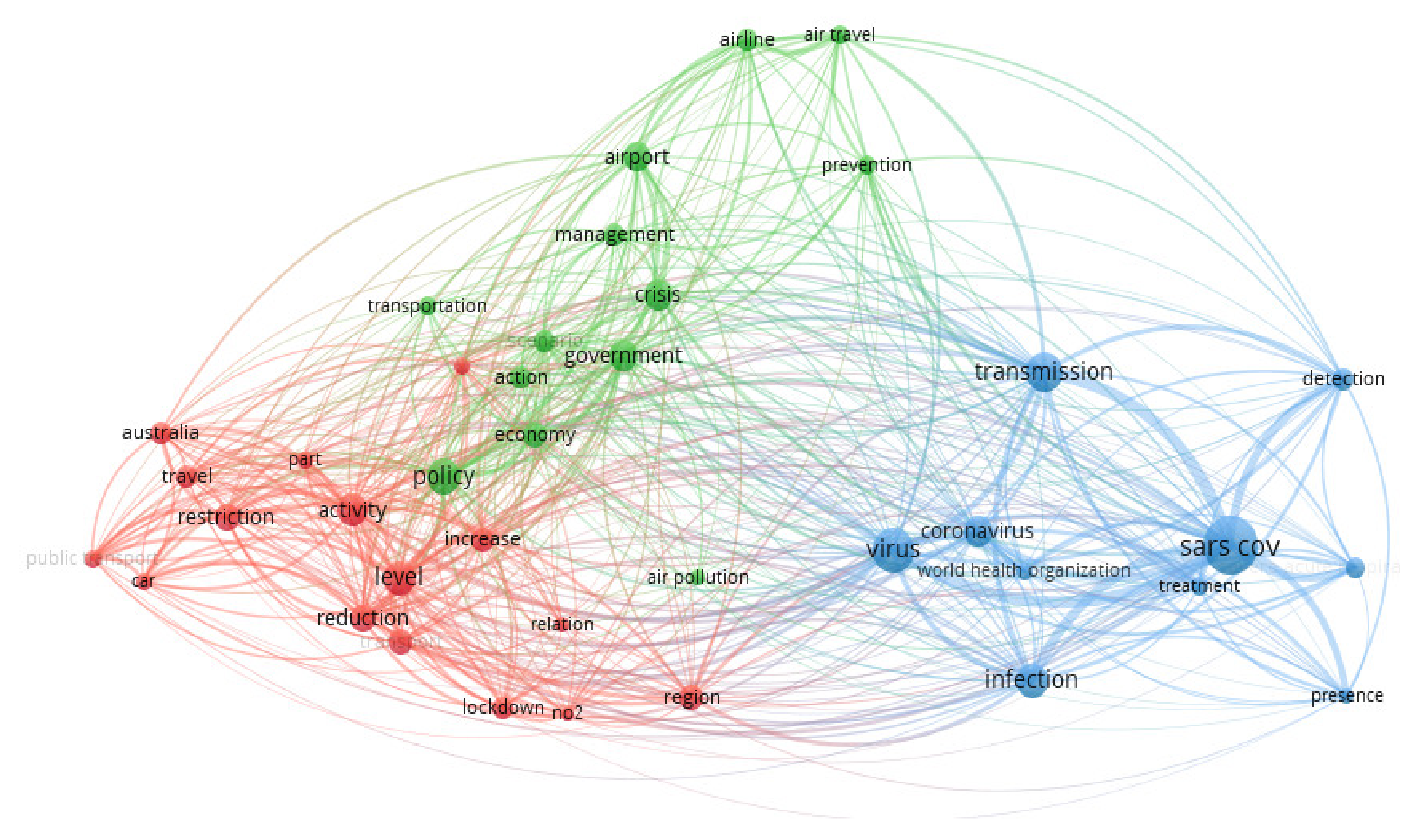
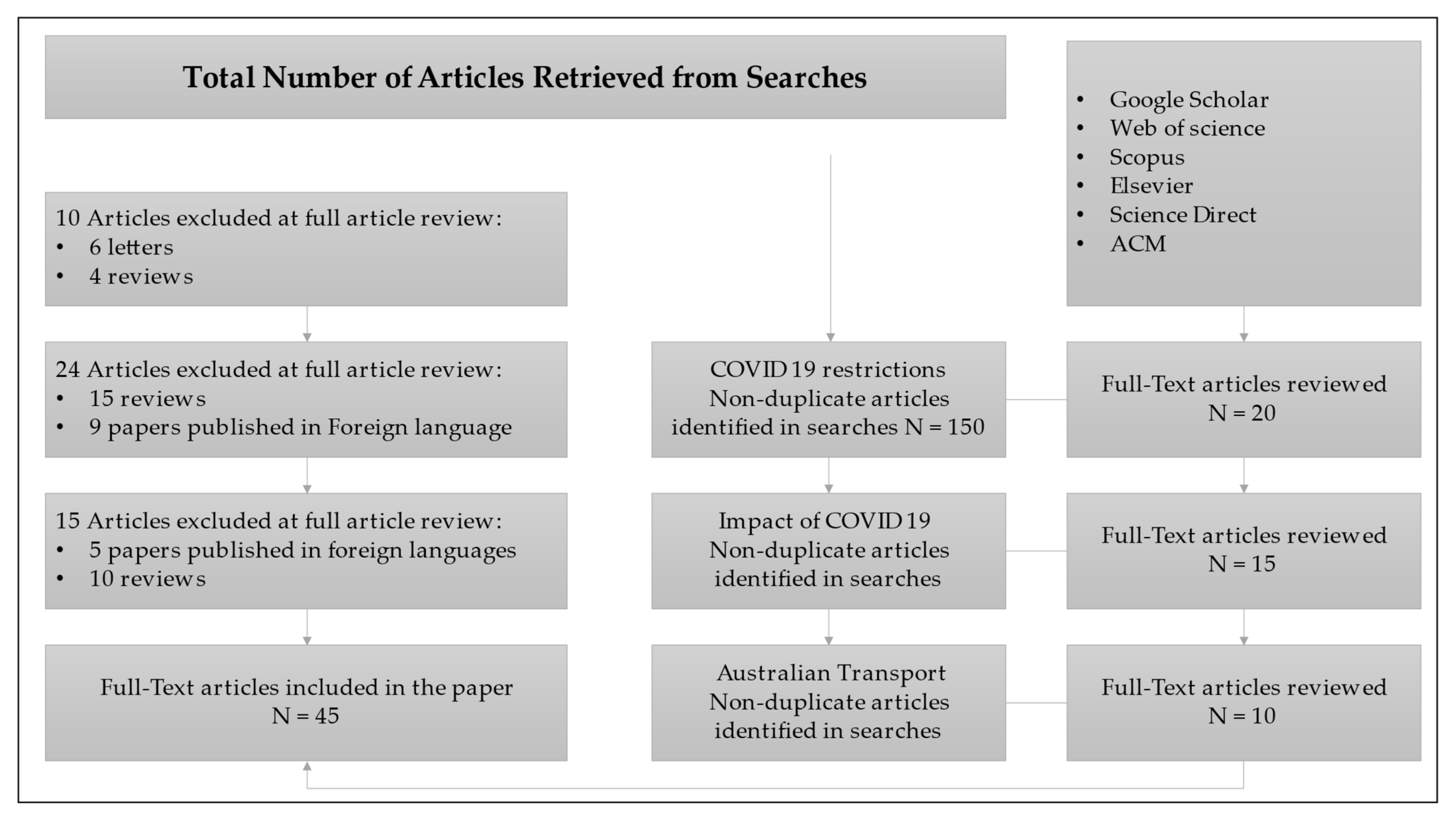
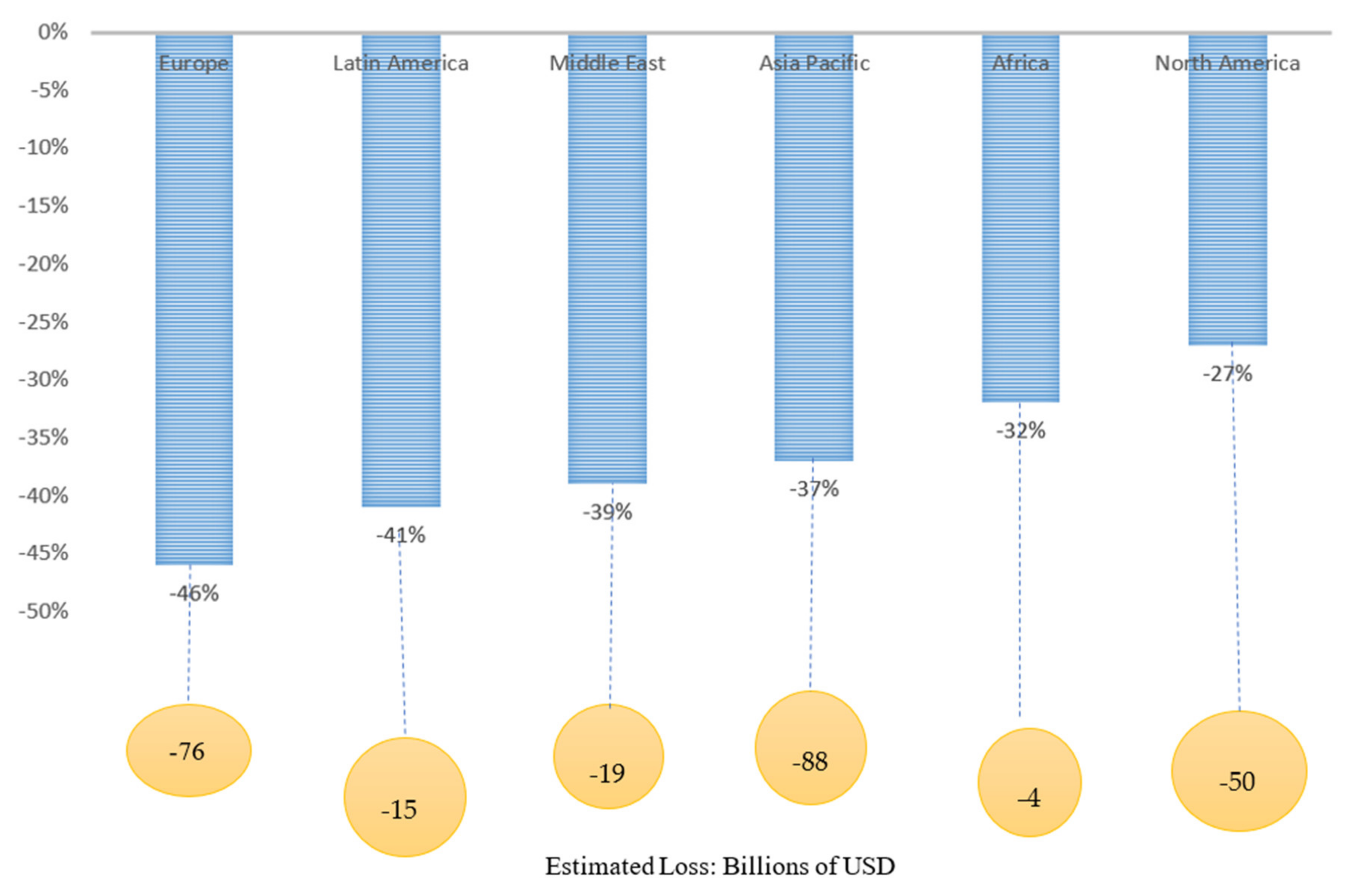
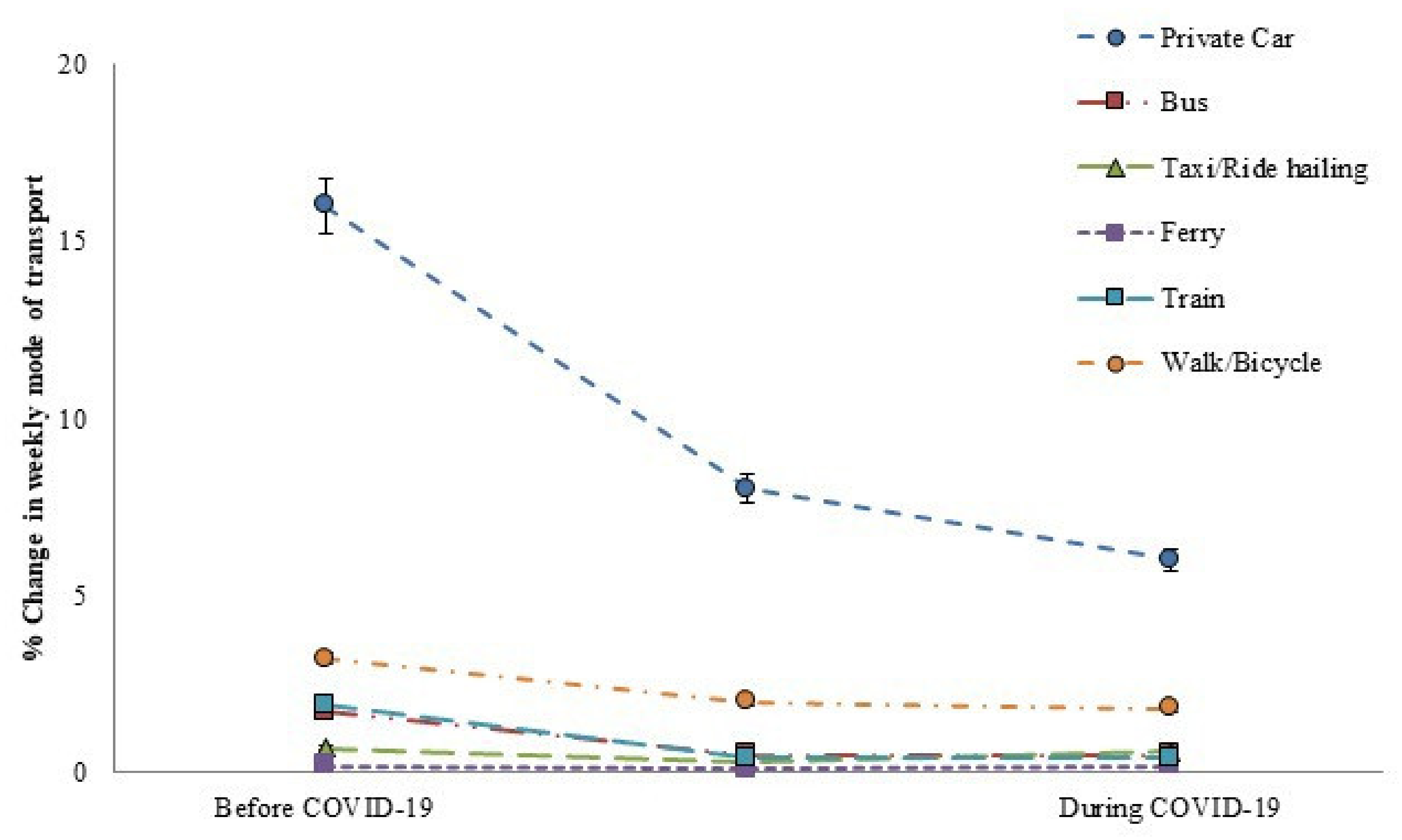
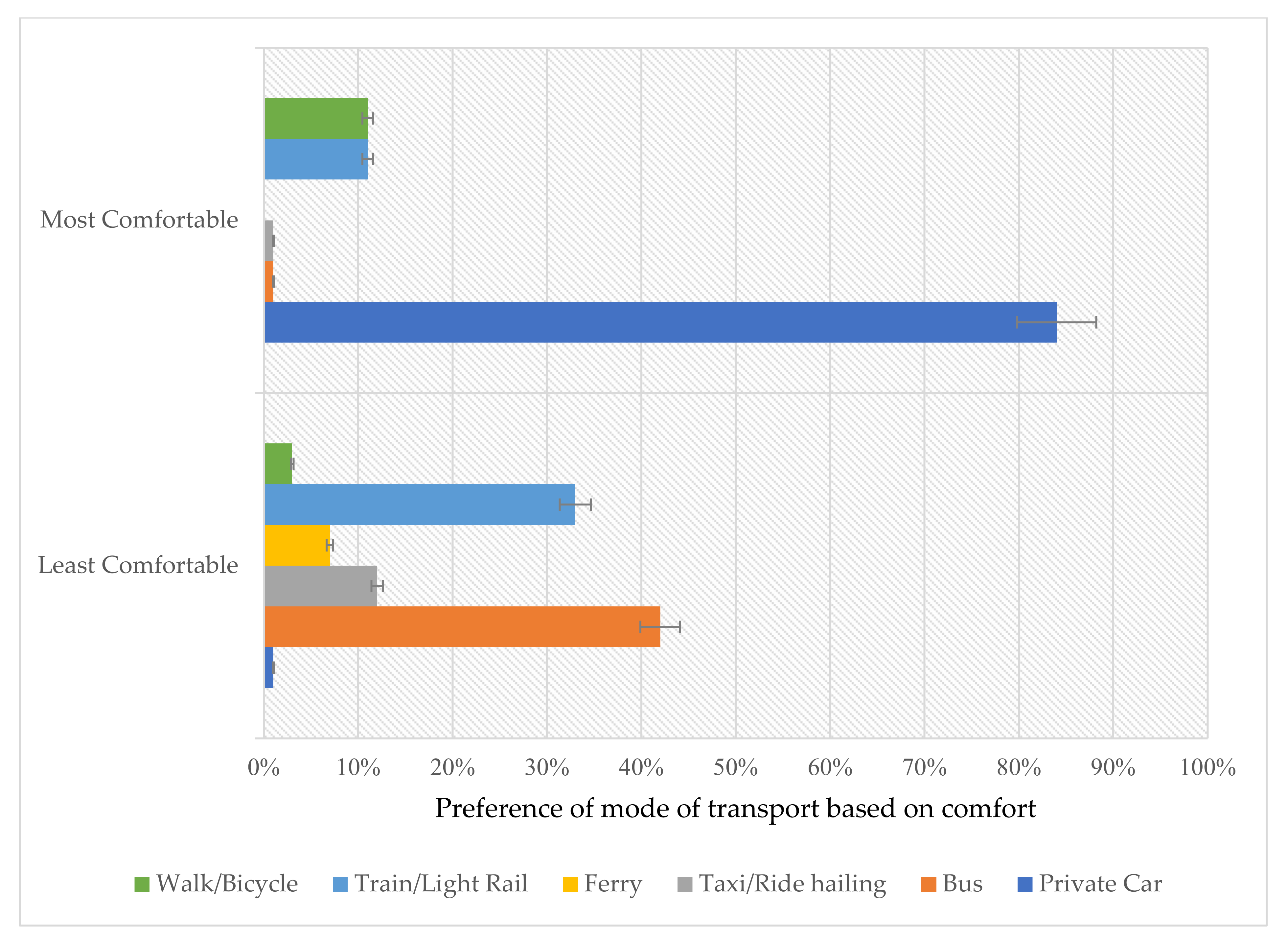
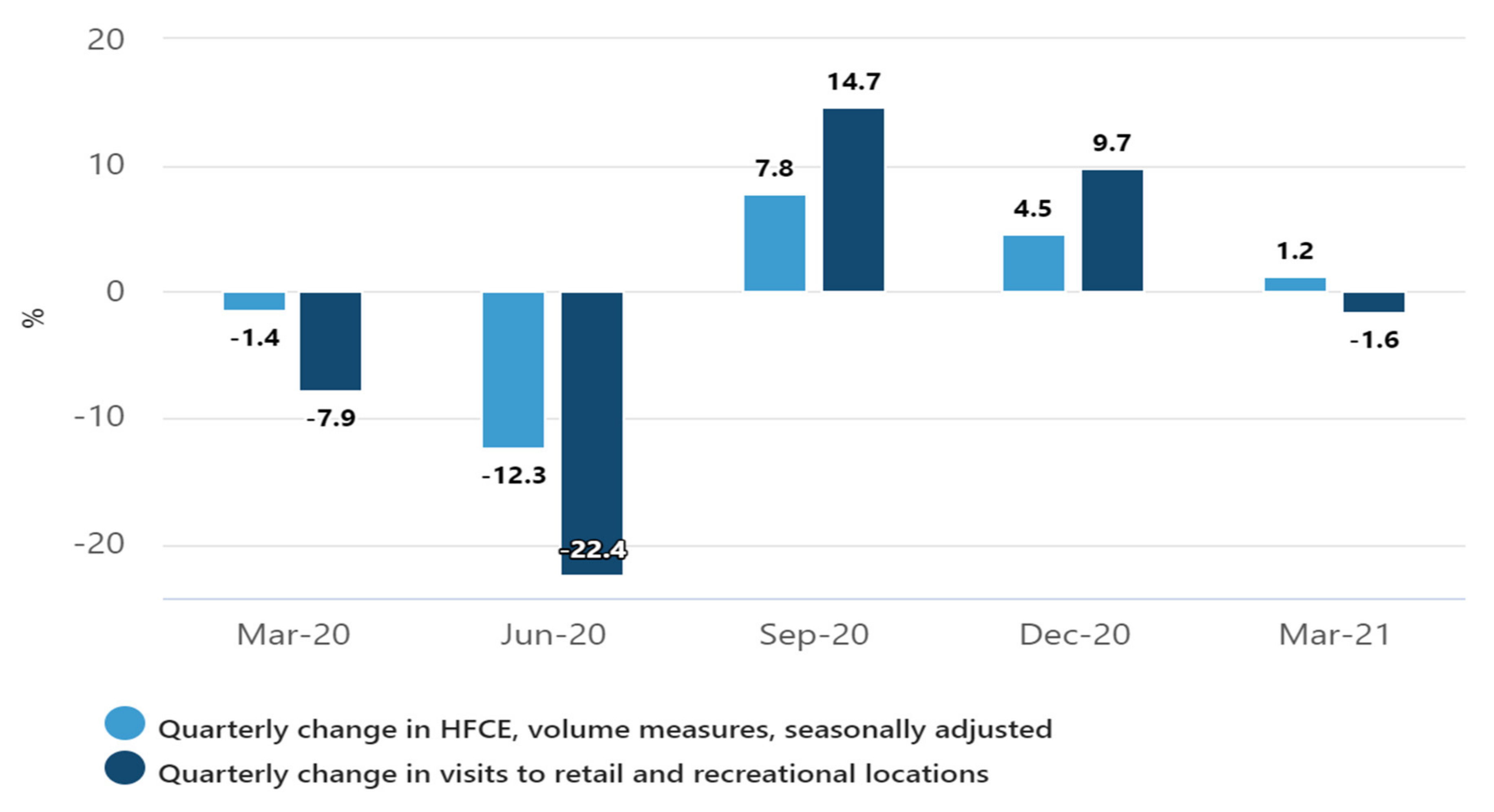
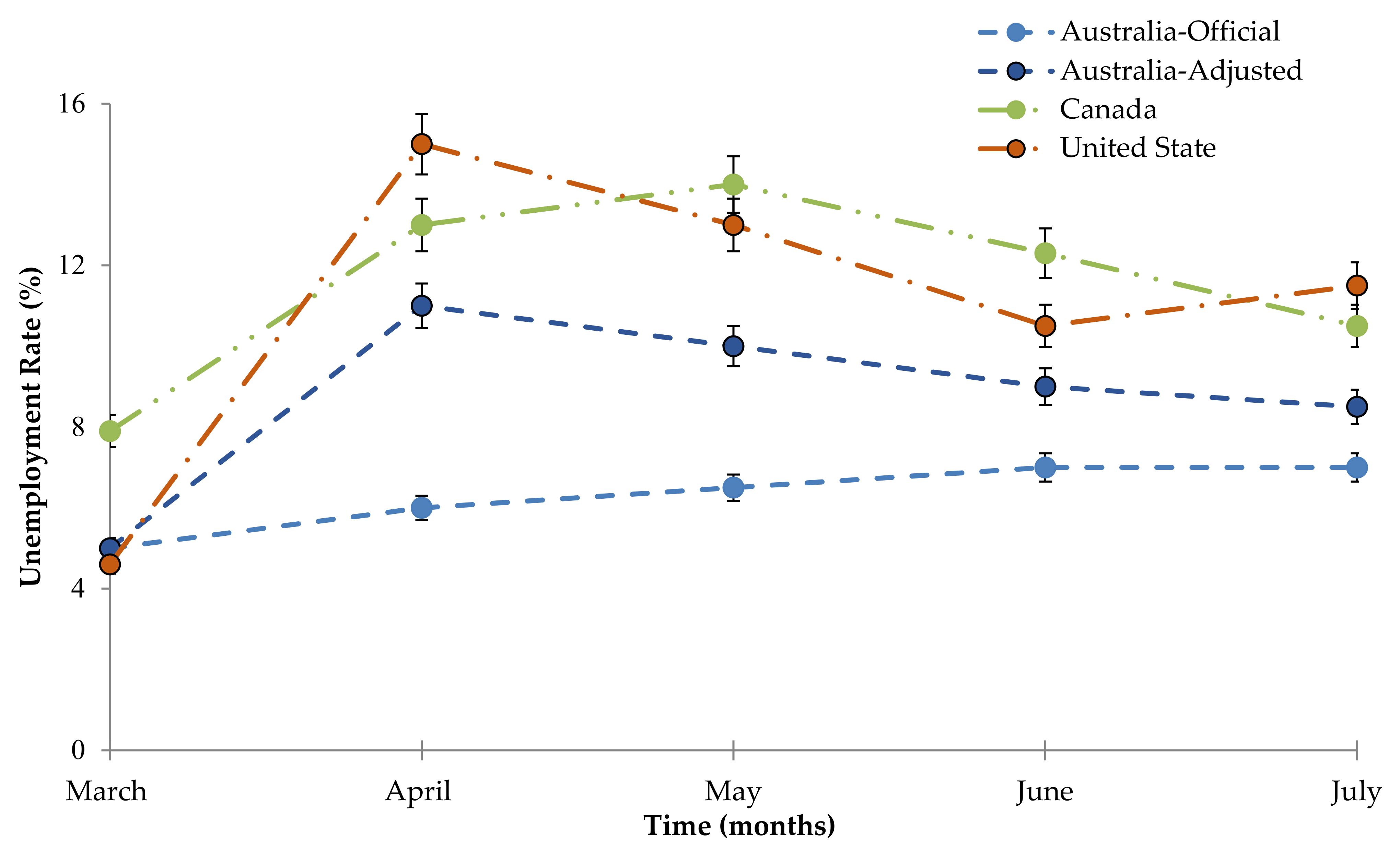
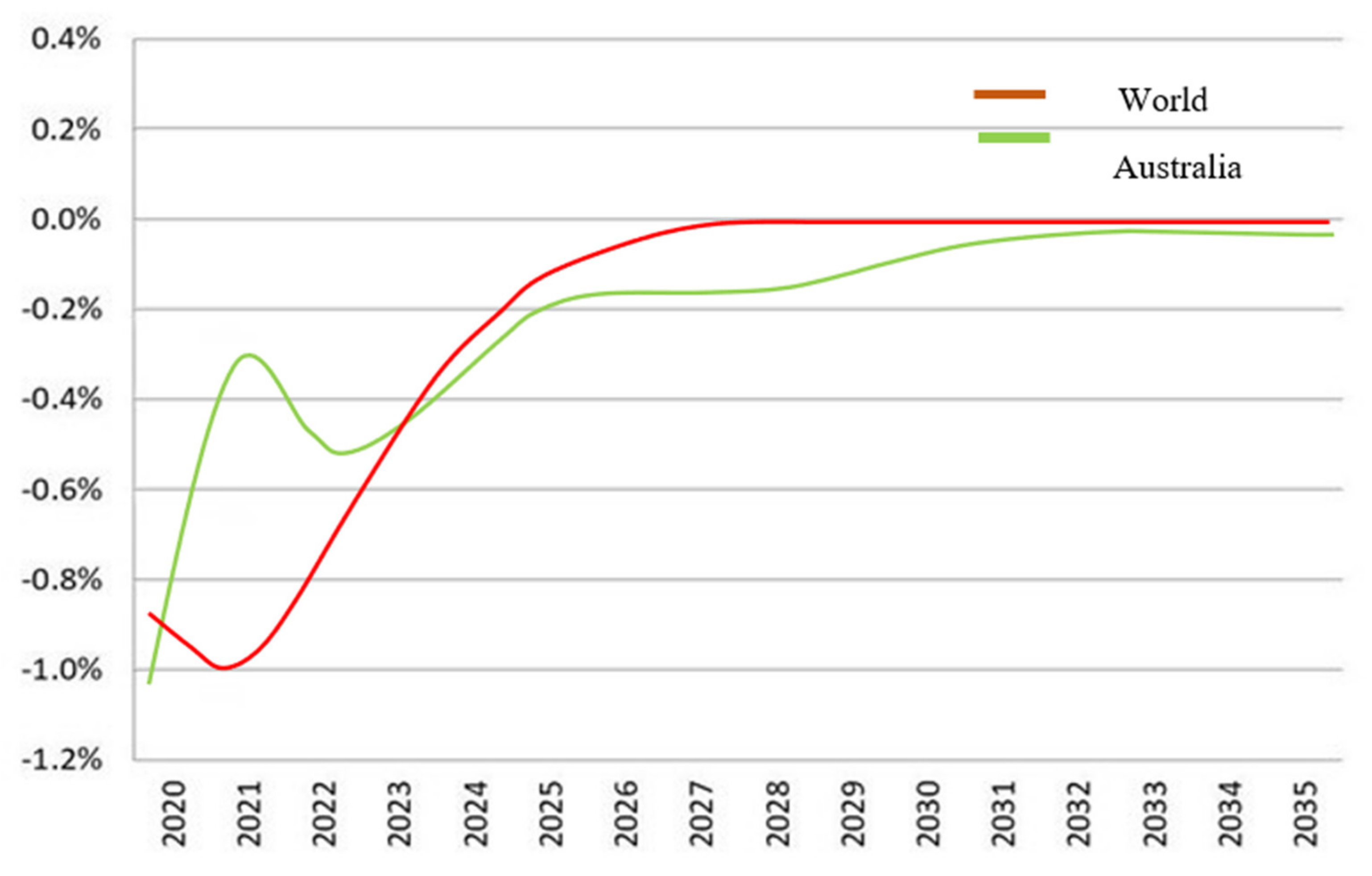
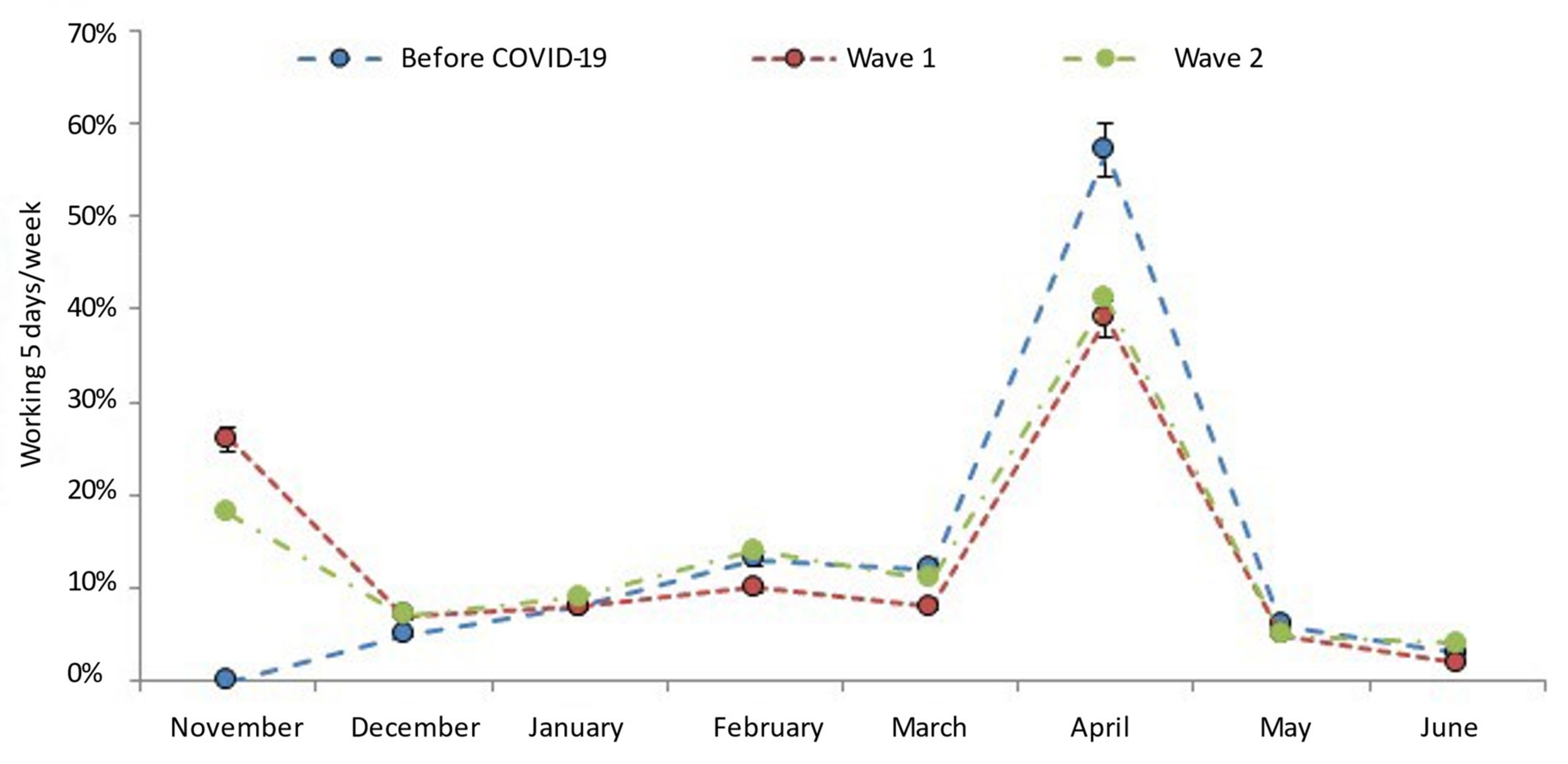
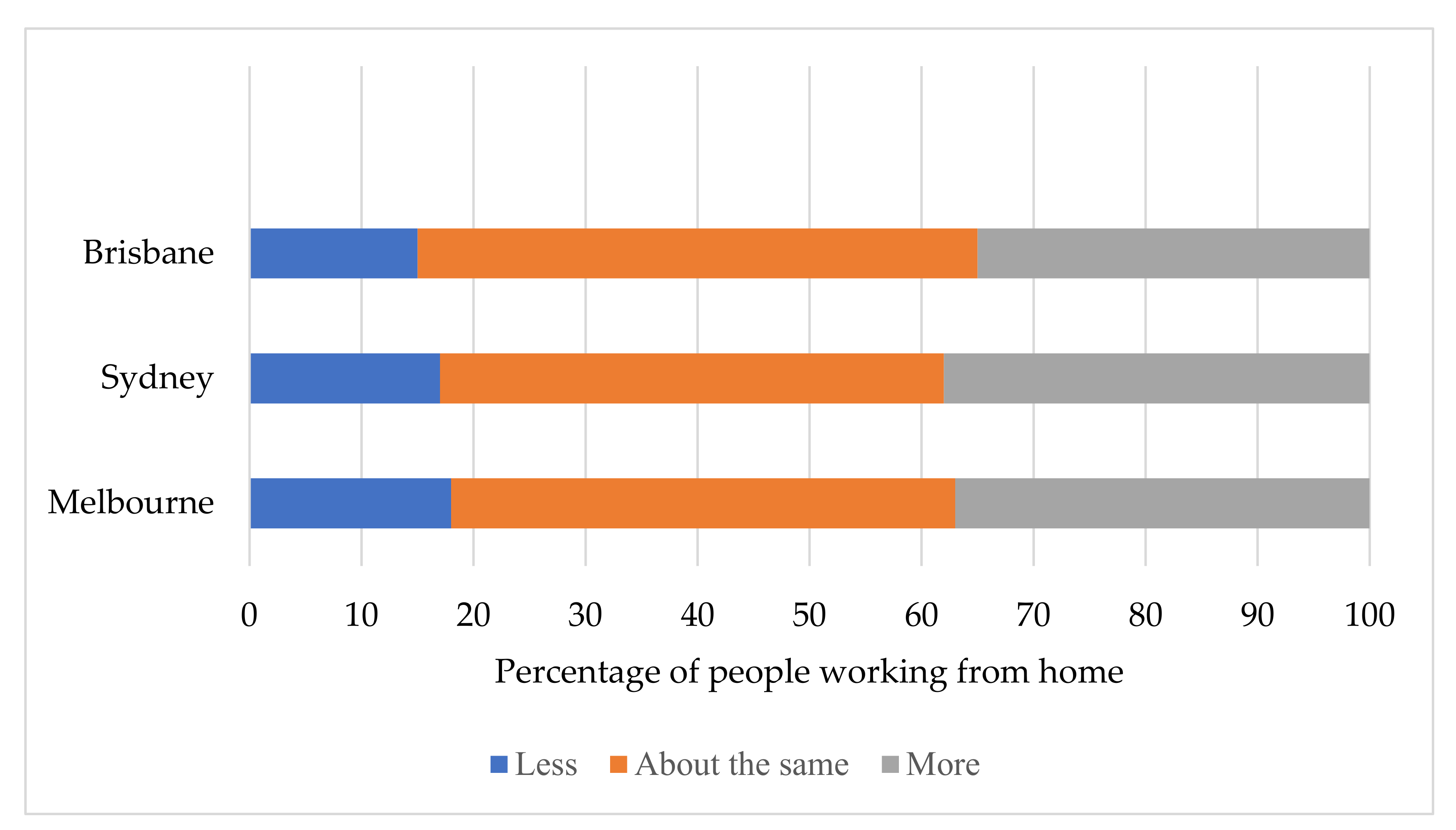
| Country | Cases | Deaths | Region |
|---|---|---|---|
| United States | 36,518,948 | 632,987 | North America |
| India | 31,934,455 | 427,892 | Asia |
| Brazil | 20,151,779 | 563,082 | South America |
| Russia | 6,447,750 | 164,881 | Europe |
| Colombia | 4,834,634 | 122,277 | South America |
| Spain | 4,588,132 | 82,006 | Europe |
| Argentina | 5,012,754 | 107,302 | South America |
| Peru | 2,124,128 | 196,873 | South America |
| Mexico | 2,964,244 | 244,248 | North America |
| South Africa | 2,523,488 | 74,623 | Africa |
| Country of Citizenship | May 2019 | May 2020 | Apr 2021 | May 2021 | May 2019 to May 2021 % Change |
|---|---|---|---|---|---|
| New Zealand | 152,810 | 2320 | 20,300 | 52,280 | −65.8% |
| UK (b) | 52,270 | 540 | 1190 | 2440 | −95.3% |
| China (c) | 123,570 | 620 | 1540 | 1920 | −98.4% |
| India | 62,220 | 1310 | 1790 | 1400 | −97.8% |
| USA | 56,840 | 300 | 830 | 1080 | −98.1% |
| Philippines | 23,010 | 250 | 570 | 870 | −96.2% |
| Vanuatu | 1060 | 0 | 510 | 600 | −43.6% |
| South Africa | 5110 | 170 | 350 | 460 | −90.9% |
| Japan | 31,050 | 110 | 320 | 420 | −98.6% |
| Malaysia | 51,730 | 80 | 300 | 410 | −99.2% |
| The Proportion of Days WFH | Before the Onset of COVID-19 | Wave 1 | Wave 2 | Future of Days WFH |
|---|---|---|---|---|
| 0% | 71% | 39% | 45% | 38% |
| Up to 20% | 7% | 1% | 2% | 4% |
| 21–40% | 4% | 3% | 2% | 10% |
| 41–60% | 3% | 4% | 4% | 11% |
| 61–80% | 2% | 3% | 4% | 8% |
| 100% | 14% | 50% | 43% | 29% |
Publisher’s Note: MDPI stays neutral with regard to jurisdictional claims in published maps and institutional affiliations. |
© 2021 by the authors. Licensee MDPI, Basel, Switzerland. This article is an open access article distributed under the terms and conditions of the Creative Commons Attribution (CC BY) license (https://creativecommons.org/licenses/by/4.0/).
Share and Cite
Munawar, H.S.; Khan, S.I.; Qadir, Z.; Kiani, Y.S.; Kouzani, A.Z.; Mahmud, M.A.P. Insights into the Mobility Pattern of Australians during COVID-19. Sustainability 2021, 13, 9611. https://doi.org/10.3390/su13179611
Munawar HS, Khan SI, Qadir Z, Kiani YS, Kouzani AZ, Mahmud MAP. Insights into the Mobility Pattern of Australians during COVID-19. Sustainability. 2021; 13(17):9611. https://doi.org/10.3390/su13179611
Chicago/Turabian StyleMunawar, Hafiz Suliman, Sara Imran Khan, Zakria Qadir, Yusra Sajid Kiani, Abbas Z. Kouzani, and M. A. Parvez Mahmud. 2021. "Insights into the Mobility Pattern of Australians during COVID-19" Sustainability 13, no. 17: 9611. https://doi.org/10.3390/su13179611
APA StyleMunawar, H. S., Khan, S. I., Qadir, Z., Kiani, Y. S., Kouzani, A. Z., & Mahmud, M. A. P. (2021). Insights into the Mobility Pattern of Australians during COVID-19. Sustainability, 13(17), 9611. https://doi.org/10.3390/su13179611







